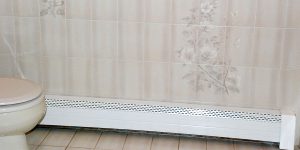The Different Pros and Cons of Baseboard and Why Covers can make your Life Easy
When it comes to redoing your hydronic baseboard system, what are the pros and cons of baseboard replacement versus baseboard covers?
 When you want your home looking good all of the time, chances are you’ll have to spend plenty of your free time and money every once in a bit to do some renovations and get your house back to 100%.
When you want your home looking good all of the time, chances are you’ll have to spend plenty of your free time and money every once in a bit to do some renovations and get your house back to 100%.
However, this process is oftentimes easier said than done, especially when you run into specific cases. Sometimes you want to repaint everything and one part of the house is giving you an issue, or some minor remodeling turns into a lot more work than you thought.
Generally speaking, a minor home renovation every once in a while isn’t too challenging as a do-it-yourself project. But, there are some cases where fixing up your home becomes quite a hassle, especially when it comes to your home’s air conditioning system.
Because the system pumps out so much energy at any given time to keep your house regulated, it stands to reason that your air conditioning setup will need some work from time to time.
Hydronic Heaters and How They Work
Most homes have hydronic or water heaters, which provide heat to your home through the baseboard heaters that line the walls in most rooms in your house.
These heaters are sharp, metal, tend to have an outdated look, and are almost always disgusting and requiring cleaning. You need to keep your baseboard looking good- after all, baseboard is in most rooms of your house and can severely detract to the look of the room.
This is always easy said than done, mainly because the heaters are so prone to damage, rusting, and wear-and-tear, that any renovations you do will become a moot point. Plus, renovating baseboard is incredibly time-consuming as you have to take apart each piece on each strip of baseboard and put some time into each piece with cleaning and/or painting.
Of course, you could just replace the parts, but that would cost quite a bit of money and, again, the parts will end up rusting within a few months of use. There are both pros and cons of baseboard, but all of the different cons mean that you need a good way to renovate your baseboard.
Pros and Cons of Baseboard Covers
The solution is baseboard covers, because they can easily be used to replace the front plate of the baseboard and simply cover up the entire baseboard heater, providing your home with a much better look.
However, you don’t just want any baseboard cover: you need to make sure the cover you get is cost-efficient, has longevity to it, and is easy to use. Enter NeatHeat, a cover with the ability to provide some of the best pros and cons of baseboard covers out there.
Why you should be Using NeatHeat
With NeatHeat’s covers, you don’t have to worry about rust, chipping, dents, and sharp edges, because the covers are made of a composite polymer. They also will not yellow, fade in color, show scratches easily, or melt well below the operating temperatures of your home.
The installation is the best part: all of the parts snap on instantly, and any caveats have been thought of. If you installed the floor after the baseboard, you can snap off the bottom of the end caps to fit your floor.
If pieces are too short, you attach them together with a splice plate; and if they’re too long, they can be cut with a hack saw or chop saw. NeatHeat is the ultimate air conditioning renovation system, providing you with only advantages.
To learn more about the pros and cons of baseboard covers from NeatHeat, click here.
